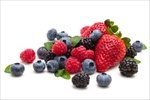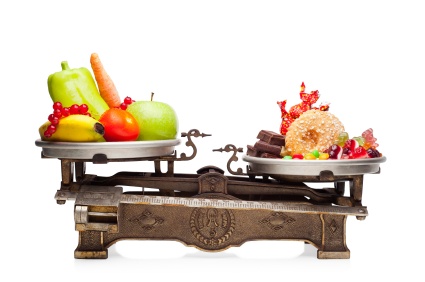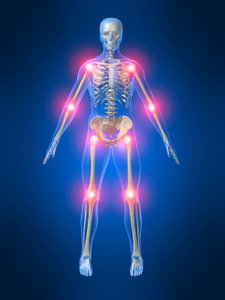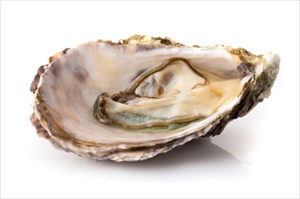Orac Values – Understanding Antioxidants in Food and Antiaging Nutrition
What are Orac Values?
While an ORAC may sound like a fantasy creature that Lewis Carrol or Dr. Suess invented, it’s something you want to know for the good of your health.
It stands for Oxygen Radical Absorbency Capacity. As well as a mouthful, an ORAC is a measure of the anti oxidant power of a food.
Generally, foods with high Oxygen Radical Absorbency Values contain more antioxidants than foods with lower values.

High ORAC value foods help combat oxidation from free radicals – a biological process which is an inevitable part of living.
Simply by breathing, digesting, sitting upright and running for the bus, you expend energy, burn oxygen and, therefore, create free radicals. Additional free radicals can be a result of environmental assaults like radiation, pollution, smoking and eating charred or toxin laden food, among other things.
How ORAC values relate to antiaging nutrition and good health? – Free Radicals and their effect on health and disease
Oxidation and the production of free radicals are an inevitable byproduct of energy production which happens in the mitochondria - the cellular version of an industrial power plant.
Along with oxygen, nitrogen is another source of volatile free radicals. Together scientists theorize that free radicals cause or accelerate human aging and cause or promote diseases including inflammation, cancer, cardiovascular disease, high blood pressure, stroke, diabetes, macular degeneration and cataracts, among other conditions.
Free Radicals – Unstable Fiends Causing Cellular Havoc
Free radicals are unpaired electrons within a cell, atom or ion. These unstable byproducts, cellular exhaust if you will, can harm other cells, including DNA, RNA proteins, fats and cell membranes, unless they are stabilized.
One way to stabilize these destructive free radicals is for the cell to acquire a replacement electron – in effect to be rearmed. This is why anti-oxidant foods are so valuable. They provide the unstable cell with a replacement electron so that it can stop its destructive behavior toward other cells.
Think of bullies in a school yard who turn a new leaf with peaceful and polite behavior … until the next dust up.
The Free Radical side to Antioxidants
Once an antioxidant donates an electron, it too can become a free radical, if often a less damaging kind. It, in turn, requires an anti oxidant for stability, so that it can continue its anti oxidant activity.
This cycling from anti-oxidant to oxidant and again to anti-oxidant, which can happen within seconds thousands of times a day, is why, as we’ll see below, antioxidants often work synergistically with other anti-oxidants. It is a cycle that some researchers have described as the “antioxidant network”.
Why care about free radicals?
Many experts are convinced that the production of free radicals is a cause of aging and may precipitate and promote many diseases.
If a person counters this free radical activity or oxidative activity with sufficient anti oxidants, the effects of aging and disease processes like inflammation, cancer, arthrosclerosis and high blood pressure may be slowed, halted and, in some cases, reversed.
How Foods High in Anti-oxidants Play A Part in Health
Our intake of antioxidants should balance the free radicals we generate. Everyone needs antioxidants to maintain good health but those who produce more free radicals than others, need additional antioxidants to counter free radicals’ damaging activity.
This means that if you smoke, eat charred or nitrate-filled meats, live in a polluted environment, do high performance athletics, or are ill or under stress, you should increase your antioxidant intake by eating food with high ORAC Values.
What is an ORAC Value?
A food’s ORAC Value or Oxygen Radical Absorbency Capacity is how researchers are able to measure the anti oxidant potential of certain foods.
Specifically, in a lab setting using specialty equipment, a food is mixed with a free radical generator and then observed to see how it slows the degradation of a fluorescent molecule over time. ORAC Values are comparative measures. They let a consumer know the anti oxidant capacity of a certain portion of food in relation to a portion of another food.
| ORAC Values For a free searchable database that uses USDA figures, check out the useful link to ORAC values at the bottom of this page. |
There are many nutrients established to have an antioxidant effect including vitamins A, C, D and E, beta carotone and selenium. Glutathione, coenzyme Q10, L-carnitine and myriad polyphenols including tannins, lignins and flavonoids are recognized as antioxidants as well. Many have been studied extensively.
Foods having relatively large amounts of antioxidant flavonoids include citrus fruits, berries, onions and garlic, tea, red wine and dark chocolate. No surprise but all these foods are found to have high ORAC values.
How Network Antioxidants Work and Why They are Important
Lester Packer in his book The Antioxidant Miracle, explains well how vitamin C, vitamin E, glutathione, lipoic acid and coenzyme Q10 as network antioxidants permit other antioxidants, including those within the network, to recycle into fully functioning anti-oxidants after they have donated electrons in the free radical quenching process. The ability of this group of antioxidants to “rearm” after they have neutralized free radicals makes them extremely valuable for maintaining health and delaying the effects of aging.
Top Foods with High ORAC Values - Antiaging Nutrition Stars
|
It follows that eating foods rich in the above anti oxidants is a good move. Packer is a proponent of supplementing the above nutrients (except for glutathione which is not absorbed readily either through food or supplements) because it is impossible to consume, via food, enough of them to show a therapeutic effect.
Some Cautions when Assessing ORAC Scores
While ORAC values are useful in directing you to foods high in antioxidants, they don’t tell the whole story about a food’s antioxidant capacity.
First, the ORAC Values generally tests a food’s anti-oxidant effect on one kind of free radical – the peroxyl radical. There are other free radicals for which some antioxidant foods would be a valuable counter but are not reflected in the ORAC Values.
Second, comparing ORAC scores can be tricky. While many herbs and spices have extremely high ORAC rating, you only eat minimal quantities. It follows these foods’ antioxidant effect could be considerably less than a food with a lower ORAC Value eaten in greater volume.
Nevertheless, it has become increasingly clear that foods rich in antioxidants are important for both maintaining health and preventing and reversing illness and the effects of aging.
|
Tips for Increasing Antioxidants and Achieving & Maintaining Antioxidant Function in Foods
- Don’t overcook your veggies. Boiling can destroy up to 90% of antioxidants.
- Store Foods properly and don’t expose to air.Like metal rusting or cut apples turning brown, food, including anti-oxidant rich kinds, exposed to air will oxidize.
- Consume Vitamin C rich foods or supplements at intervals throughout the day. Vitamin C is water soluble and can’t be stored in the body for future use. Excess C is excreted through urine so make sure you eat vitamin C-rich food or supplements throughout the day.
Who Should Eat Foods With High ORAC Values or Consider Taking Antioxidant Supplements
Smokers Heavy drinkers Those who live, work, or commute in a polluted environment including those exposed to exhaust fumes or heavy metals. Airplane crews and health workers exposed to higher than average levels of radiation through high altitude flying or working with radiation equipment. High performance athletes, especially after a major workout or competition. Those suffering from or at risk for cancer, inflammatory conditions, diabetes, cardiovascular disease, macular degeneration and cataract.* *Before supplementing specific antioxidants for specific health conditions like cancer or a heart condition, consult with a health care practitioner.
Reasons, other than High ORAC Value or Anti oxidant Function to Consume Certain Foods or Antioxidant Supplements
Researchers have determined that vitamin C, vitamin E and other antioxidant rich foods combat disease because, among other actions, they help turn off and turn on genes that cause or prevent disease or signs of aging. While not an antioxidant function, these are additional reasons for consuming foods containing these important nutrients.
Some useful links to expand your knowledge of Orac Values....
For more information on what foods have High ORAC Values, read Dr. Mariza Snyder and Dr. Lauren Clum’s The Antioxidant Counter: A Pocket Guide to the Revolutionary ORAC Scale for Choosing Healthy Foods.
For a free searchable database that uses USDA figures, check out this useful, press on ORAC Values
Press here for more about a Healthy Balanced Diet,
Press here for more about anti-inflammatory diets.
Press here for more about inflammatory foods.
Press here for more about cancer and nutrition and cancer prevention diets.
Press here for more about the Benefits of Vitamin C.
Press here for more about the Benefits of Zinc.
Press here for more about the Benefits of Vitamin D.
Press here for more about the Benefits of Magnesium.
Press here for more about Omega 3 Benefits.
Click here for timely info on Diet and Nutrition research news in Healthy Diet Blog.
Click here to return to Healthy-Diet-Healthy-You Home Page.









